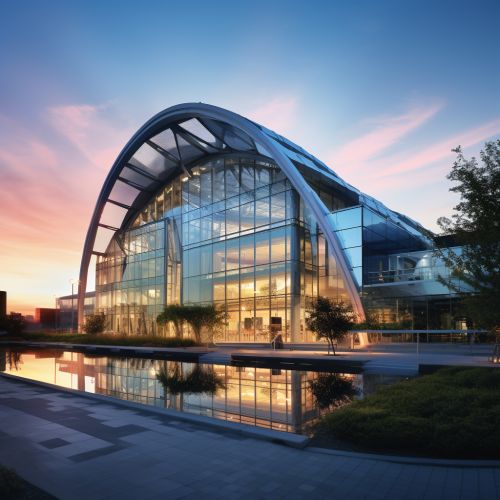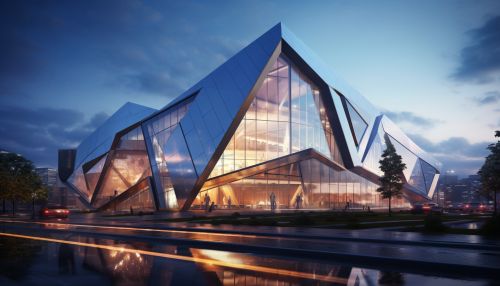High-tech architecture
Overview
High-tech architecture, also known as Late Modernism or Structural Expressionism, is an architectural style that emerged in the 1970s. The design aesthetic is characterized by the prominent display of the building's technical and functional components, and an orderly arrangement and use of pre-fabricated elements. Steel, glass, and concrete are often used in construction, with the visual emphasis placed on the structure itself.


History
High-tech architecture originated in the postmodern era, as architects sought to move away from the perceived rigidity and uniformity of modern architecture. The style was inspired by the technological advances and engineering feats of the time, with architects such as Sir Norman Foster, Richard Rogers, and Renzo Piano leading the movement.
Characteristics
High-tech architecture is characterized by a number of distinctive features. These include the use of modern, industrial materials such as steel and glass, the exposure of structural and mechanical systems, and a modular, flexible design approach. The style also often incorporates sustainable design elements, such as energy-efficient systems and the use of recycled materials.
Notable Examples
There are numerous examples of high-tech architecture around the world. These include the Centre Georges Pompidou in Paris, designed by Renzo Piano and Richard Rogers, which features an exposed skeleton of brightly colored tubes and ducts. The Lloyd's of London building, designed by Richard Rogers, is another iconic example, with its external elevators and staircases, and visible mechanical systems.
Criticism and Legacy
While high-tech architecture has been praised for its innovative and forward-thinking approach, it has also faced criticism. Some argue that the style can feel cold and impersonal, while others believe it prioritizes form over function. Despite these criticisms, high-tech architecture has had a significant impact on the architectural landscape, influencing a number of subsequent styles and movements.
